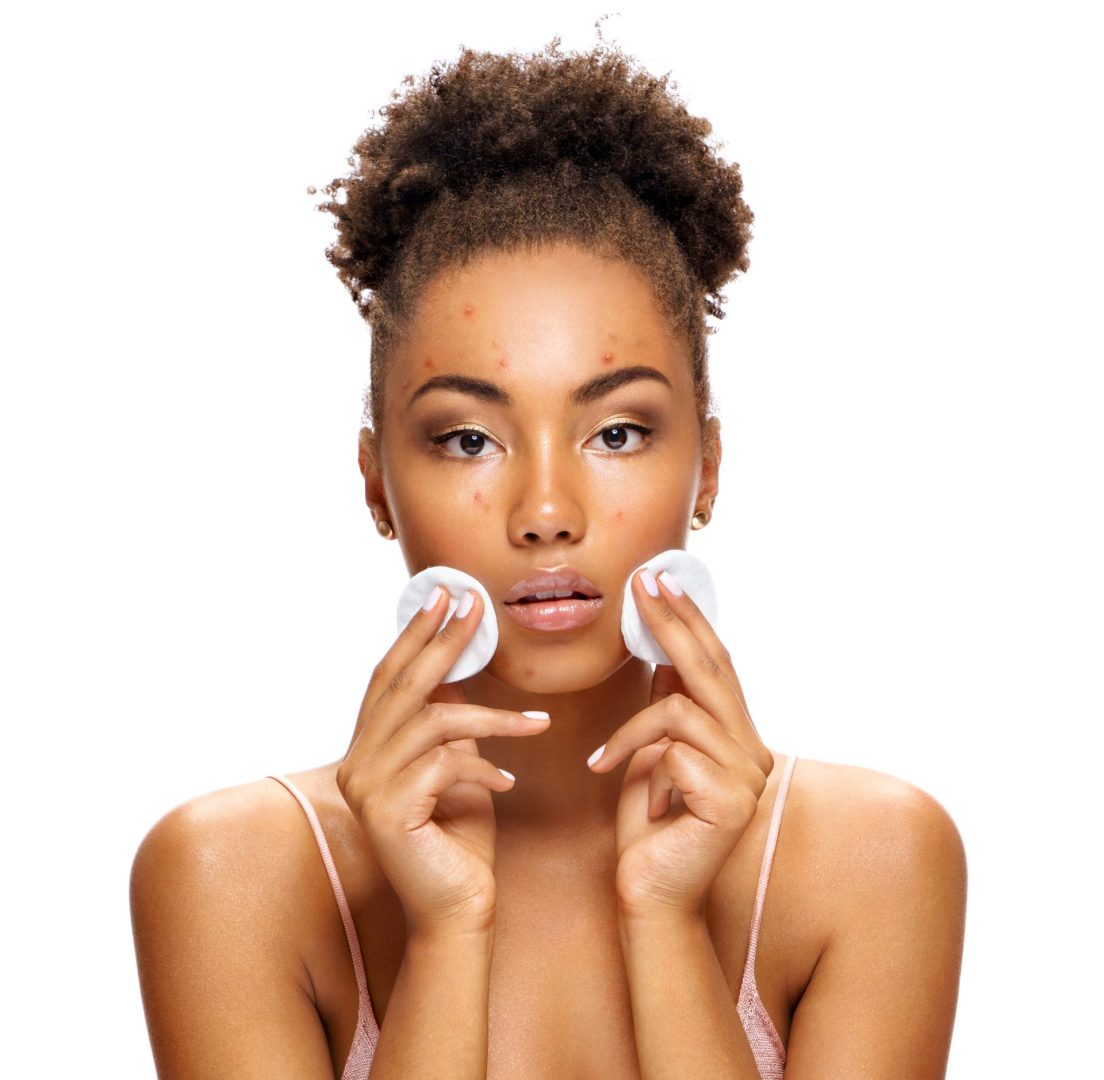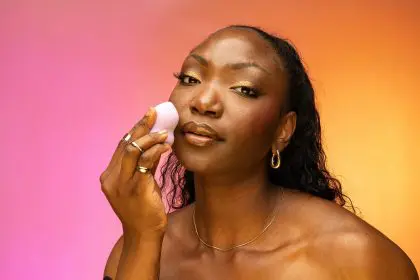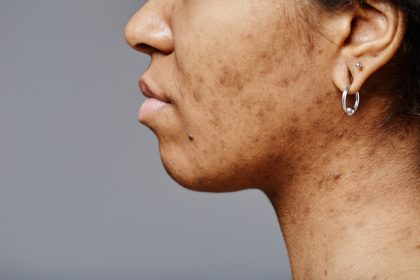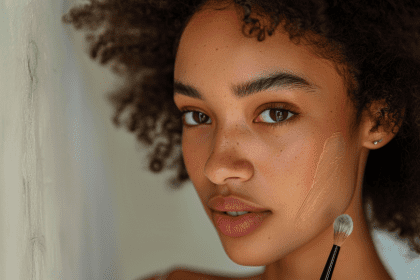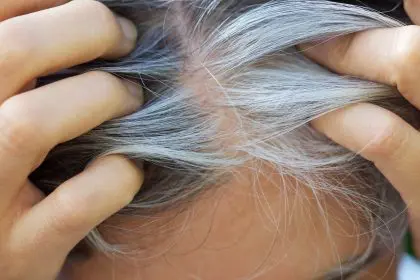Stubborn acne represents one of skincare’s most frustrating challenges. Despite following standard cleansing routines and using popular over-the-counter products, many people continue experiencing persistent breakouts that seem immune to treatment. This resilient form of acne often signals deeper underlying issues that typical topical solutions fail to address.
Several factors contribute to treatment-resistant acne. Hormonal fluctuations create sebum production changes that conventional products simply cannot regulate. This explains why many experience cyclical breakouts corresponding to specific times of the month or during major life transitions. The body’s natural hormone cycles create sebum composition changes that require more targeted intervention than standard cleansers provide.
Genetic predisposition also plays a significant role in stubborn acne development. Research indicates that specific genetic markers influence both oil production and inflammatory responses, making some individuals naturally more susceptible to persistent breakouts. This genetic component helps explain why acne problems often run in families and why identical skincare routines yield dramatically different results among different people.
Bacterial resistance poses another major obstacle. The P. acnes bacteria responsible for many inflammatory breakouts can adapt to antimicrobial ingredients over time, making previously effective treatments gradually lose potency. This adaptation process mirrors antibiotic resistance patterns seen in other medical contexts and necessitates rotating treatment approaches.
The skin’s microbiome – the collection of beneficial bacteria naturally inhabiting the skin surface – significantly impacts acne development. Modern lifestyles, excessive cleansing, and environmental factors can disrupt this delicate balance, creating conditions where problematic bacteria thrive while beneficial strains diminish. Many conventional treatments worsen this imbalance by indiscriminately killing both harmful and helpful bacteria.
Chronic inflammation underlies many cases of persistent acne. This systemic inflammatory state creates an environment where healing processes become impaired and breakouts develop more readily. Diet, stress, environmental factors, and underlying health conditions all contribute to this inflammation cycle that must be addressed for lasting improvement.
Understanding these root causes reveals why natural approaches often succeed where conventional treatments fail. By addressing underlying imbalances rather than merely treating symptoms, natural remedies offer comprehensive solutions for even the most stubborn acne cases.
5 natural solutions that address acne’s root causes
Natural acne treatments work through multiple mechanisms – reducing inflammation, balancing bacteria, regulating oil production, and promoting proper healing. These five approaches demonstrate particularly strong effectiveness against persistent acne:
1. Tea tree oil’s targeted antibacterial power
Tea tree oil stands as perhaps the most scientifically validated natural acne treatment available, with numerous studies confirming its effectiveness against the specific bacteria associated with breakouts. Unlike harsh chemical alternatives, tea tree oil selectively targets problematic bacteria while largely preserving beneficial bacterial strains necessary for skin health.
The oil contains terpinen-4-ol, a compound demonstrating impressive antimicrobial properties specifically against P. acnes bacteria. This targeted approach means tea tree oil addresses infection without creating the microbiome disruption often seen with conventional antibacterial treatments.
Beyond its antibacterial properties, tea tree oil reduces skin inflammation through multiple pathways. It inhibits specific inflammatory compounds like tumor necrosis factor-alpha and interleukin-1, which otherwise promote redness, swelling, and discomfort in acne lesions. This anti-inflammatory action helps explain why tea tree preparations often reduce acne-related redness even before completely eliminating breakouts.
For optimal results, use a 5% tea tree oil solution applied directly to affected areas after cleansing. Higher concentrations increase irritation risk without proportionally improving results. Because undiluted tea tree oil can cause skin sensitivity, always mix with a carrier oil like jojoba or purchase pre-diluted products specifically formulated for facial application.
Consistency proves essential when using tea tree oil for acne. Results typically emerge after 2-3 weeks of regular application, with continued improvement over subsequent months. Those with sensitive skin should start with lower concentrations and gradually increase as tolerance develops.
2. Honey’s multifaceted healing properties
Raw honey delivers multiple benefits for acne-prone skin through its unique combination of antimicrobial enzymes, anti-inflammatory compounds, and moisture-preserving properties. Unlike many drying acne treatments, honey maintains appropriate skin hydration while simultaneously fighting bacteria.
The glucose oxidase enzyme naturally present in raw honey produces small amounts of hydrogen peroxide upon contact with skin. This creates an environment hostile to acne-causing bacteria without the harshness of commercial peroxide products. Additionally, honey’s slightly acidic pH helps maintain the skin’s protective acid mantle, further discouraging problematic bacterial overgrowth.
Honey’s impressive anti-inflammatory properties stem from phenolic compounds that inhibit inflammatory pathways. These compounds reduce both immediate inflammation and prevent the post-inflammatory hyperpigmentation that often leaves lasting marks after breakouts heal. For people struggling with both active acne and lingering discoloration from previous breakouts, this dual action proves particularly valuable.
The hygroscopic nature of honey draws moisture into the skin while simultaneously creating a protective barrier that prevents excessive water loss. This balanced hydration approach proves especially beneficial for those experiencing combination skin with both oily and dry areas – a common challenge in acne treatment.
Apply raw honey as a 10-15 minute mask several times weekly for optimal results. Manuka honey, while more expensive, offers enhanced antimicrobial properties due to its high methylglyoxal content and proves particularly effective for stubborn cases. Avoid processed commercial honey, which often undergoes filtration and heating processes that destroy beneficial enzymes.
3. Green tea’s sebum regulation system
Green tea extract contains catechins – powerful antioxidant compounds that significantly reduce sebum production when applied topically. One specific catechin, epigallocatechin-3-gallate (EGCG), demonstrates particularly strong effects in reducing oil secretion by inhibiting specific enzymes within sebaceous glands.
Research indicates that twice-daily application of 2% green tea extract reduces sebum production by approximately 27% after eight weeks. This reduction occurs without causing excessive dryness, making green tea preparations suitable even for those with combination skin types.
Beyond sebum control, green tea possesses impressive anti-inflammatory properties through multiple mechanisms. It reduces the production of inflammatory cytokines and inhibits 5α-reductase, an enzyme that converts testosterone to its more potent form DHT, which stimulates oil production. This multi-pathway approach explains why green tea often succeeds where single-mechanism treatments fail.
The antioxidants in green tea also accelerate wound healing and combat free radical damage, addressing both current breakouts and preventing future damage. This makes green tea preparations particularly beneficial for those experiencing both active acne and lingering effects from previous breakouts.
For topical application, brew strong green tea, allow it to cool, then apply as a toner or compress to affected areas. Commercial products containing standardized green tea extract offer more consistent results, particularly those containing at least 50% EGCG. For enhanced benefits, combine topical application with daily consumption of green tea to address acne from both inside and out.
4. Zinc’s inflammation-calming capabilities
Zinc deficiency correlates strongly with severe acne, and supplementation often yields dramatic improvements, particularly for inflammatory cystic breakouts. This essential mineral regulates several aspects of skin health, including oil production, inflammatory response, and wound healing.
Topical zinc preparations reduce skin inflammation through multiple pathways, including inhibition of nuclear factor-kappa B and reduction of inflammatory cytokine production. Studies have found that zinc’s anti-inflammatory potency rivals many pharmaceutical options without their adverse effects, making it particularly valuable for long-term use.
Zinc compounds also demonstrate antimicrobial activity against P. acnes bacteria while encouraging the growth of beneficial commensal bacteria. This selective action helps restore proper skin microbiome balance rather than creating the “scorched earth” effect of many conventional antibacterial treatments.
The wound healing properties of zinc prove particularly valuable for preventing the post-acne scarring that often accompanies stubborn breakouts. It regulates collagen synthesis and promotes proper tissue regeneration, allowing skin to heal with minimal texture changes or discoloration.
For topical application, products containing zinc oxide or zinc sulfate at 0.25-2% concentration provide optimal benefits. These formulations reduce excess oil without excessive drying and create an environment inhospitable to acne-causing bacteria. Dietary zinc supplementation (15-30mg daily from zinc citrate or zinc gluconate) complements topical treatment, particularly for those with documented deficiencies.
5. Dietary modifications with proven impact
Diet-acne connections have gained substantial scientific validation in recent years, with multiple studies confirming that specific dietary patterns significantly influence breakout frequency and severity. Three dietary modifications demonstrate particularly strong effects on stubborn acne:
Reducing high-glycemic foods directly impacts acne development by lowering insulin and insulin-like growth factor-1 (IGF-1) levels. When elevated, these hormones increase sebum production and promote keratinocyte proliferation, creating ideal conditions for acne formation. Replacing refined carbohydrates with complex alternatives like whole grains, legumes, and vegetables often yields visible skin improvements within 2-3 weeks.
Dairy reduction shows particularly strong correlation with acne improvement in multiple studies. The hormones naturally present in milk – even organic varieties – can stimulate oil production and promote inflammation in susceptible individuals. This effect appears strongest with skim milk, suggesting that processing methods may concentrate problematic components. Plant-based alternatives like almond, oat, or coconut milk provide calcium without triggering hormone-related breakouts.
Omega-3 fatty acid consumption counteracts the pro-inflammatory effects of the standard Western diet. These essential fats, found in fatty fish, walnuts, flaxseeds, and chia seeds, help regulate the skin’s inflammatory response and improve barrier function. Research indicates that 1-2 grams daily provides optimal benefits for inflammatory skin conditions like acne.
For maximum effectiveness, these dietary modifications require consistent implementation over 8-12 weeks. Gradual adjustments typically yield better compliance than drastic overhauls. Many find that maintaining a food journal alongside photographs of skin condition helps identify specific triggers beyond these general guidelines.
Additional natural approaches for comprehensive treatment
While the five treatments above demonstrate the strongest evidence for resolving stubborn acne, several complementary approaches enhance their effectiveness:
Stress management techniques
The connection between stress and acne extends beyond coincidence. Stress hormones like cortisol directly stimulate sebaceous glands and promote inflammation throughout the body, including the skin. Additionally, stress impairs barrier function and slows wound healing, extending the duration of existing breakouts.
Regular stress reduction practices – including meditation, yoga, deep breathing exercises, or simply scheduling adequate downtime – can significantly reduce breakout frequency and severity. Even brief daily practices show measurable effects on stress hormone levels and inflammatory markers.
For those experiencing stress-triggered breakouts, adaptogens like ashwagandha and rhodiola may provide additional support. These botanical medicines help normalize cortisol levels and improve the body’s resilience to stressors without sedating effects.
Gentle exfoliation methods
Proper exfoliation removes dead skin cells that might otherwise clog pores, but harsh scrubbing can worsen inflammation and spread bacteria. Natural exfoliants provide effective cell turnover without the irritation risks of conventional options.
Enzyme-based exfoliants derived from pineapple (bromelain) or papaya (papain) dissolve the proteins binding dead cells together without abrasive action. These gentle alternatives prove particularly suitable for inflamed skin that cannot tolerate physical scrubs.
For chemical exfoliation, naturally derived alpha-hydroxy acids like lactic acid (from fermented milk) or mandelic acid (from bitter almonds) provide effective exfoliation with minimal irritation risk. These ingredients loosen dead cells while simultaneously hydrating the skin, avoiding the excessive dryness often accompanying conventional chemical exfoliants.
Proper hydration strategies
Contrary to popular belief, acne-prone skin requires appropriate moisturizing to heal properly. Dehydrated skin often produces excess oil to compensate, creating a counterproductive cycle that worsens breakouts.
Non-comedogenic natural oils like jojoba, hemp seed, and squalane closely resemble the skin’s natural sebum, providing moisture without clogging pores. These oils can actually help regulate natural oil production through a feedback mechanism that signals sebaceous glands to reduce output.
Hyaluronic acid, naturally found in the skin, attracts water without adding oil, making it ideal for acne-prone skin requiring hydration. When applied to slightly damp skin, it draws moisture into the deeper layers without creating surface oiliness.
Creating an effective natural acne treatment routine
For optimal results, combine multiple approaches in a consistent routine that addresses all aspects of stubborn acne:
Morning protocol should focus on gentle cleansing followed by anti-inflammatory treatment and non-comedogenic protection. Begin with a mild cleanser containing tea tree or honey, follow with green tea toner, apply zinc-based treatment to active breakouts, and finish with lightweight plant-based hydration.
Evening routines should emphasize repair and treatment. After thorough but gentle cleansing, apply stronger treatments like tea tree oil to active breakouts, followed by honey-based masks several times weekly. Finish with appropriate hydration to support overnight healing processes.
Weekly detoxification treatments such as clay masks help draw impurities from deeper skin layers. Bentonite or kaolin clay mixed with anti-inflammatory additions like honey or green tea provide deep cleaning without excessive drying when limited to 10 minutes and followed by proper hydration.
Patience and consistency remain essential with natural acne treatments. While many conventional products promise overnight results (but deliver temporary improvement at best), natural approaches address root causes that require time to resolve. Expect initial improvements within 2-3 weeks, with progressive enhancement over 2-3 months of consistent application.
Document your progress with weekly photographs in consistent lighting to accurately track improvements. This visual record often reveals gradual positive changes that might otherwise go unnoticed in day-to-day observation.
Natural acne treatments offer effective solutions for even the most persistent breakouts by addressing multiple contributing factors simultaneously. By combining targeted topical treatments with internal support through diet and stress management, these approaches provide comprehensive care that resolves current breakouts while preventing future recurrence.

